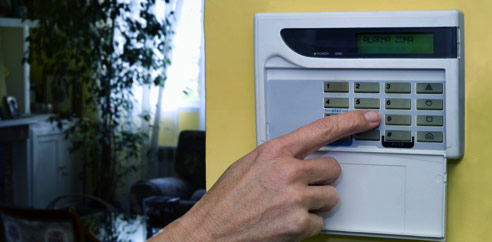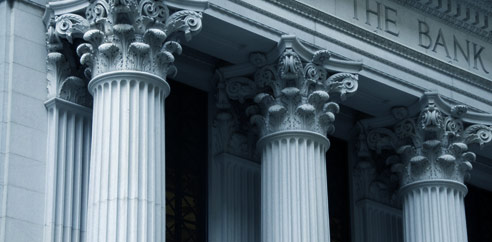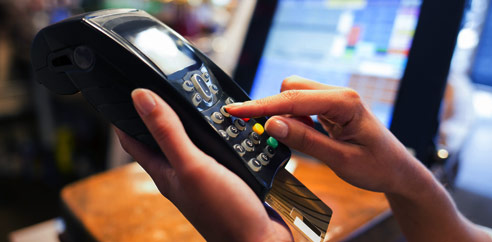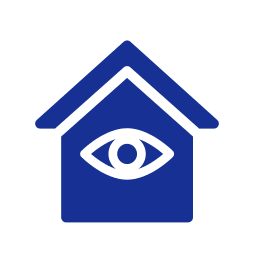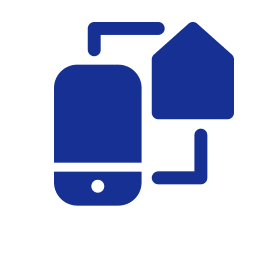NRF’s VP of Loss Prevention, Robert Moraca, Speaks On Latest Trends & NRFProtect
Loss prevention is a complex and costly issue for the retail industry. In this podcast, American Alarm speaks with Robert Moraca, vice president for loss prevention at the National Retail Federation. Robert discusses tools and techniques proven to reduce retail loss, as well as this week’s NRF convention in Philadelphia, where the latest information and expertise in loss prevention will be made available to all attendees. Tweet this or subscribe for to be emailed upcoming Loss Prevention Podcast episodes.
Transcript:
Benjamin: Welcome to the American Alarm’s Loss Prevention Podcast Series. I’m your host, Benjamin Hunting, and with the National Retail Federation’s annual loss prevention conference coming up, we’re talking with Robert Moraca, Vice President for Loss Prevention at NRF. Among other things, Bob is responsible for directing NRF’s loss prevention and asset protection research initiatives and programs, including NRF’s annual loss prevention conference. Now Bob, NRF’s research indicates in 2015 that 40% of businesses increased their loss prevention budget from the previous year and inventory theft in 2014 cost businesses nearly $45 billion. Could you maybe put these numbers in perspective relative to previous years for our audience and describe the current state of the industry and the importance of being proactive when it comes to loss prevention?
Robert: I sure can, Ben, and that’s an interesting statistic that you start with because the research we did last year and we put out every year is something called The National Retail Security Survey. Matter of fact, these’ll be 2015 numbers. The 2016 survey’s in the field right now. So that 40% is…compared to the year before, most budgets were flat, but last year we had an increase in organized retail crime. I’ll explain that in a moment. So as a result, retailers and their senior leadership team and the loss prevention executives had increased their budgets in order to fight this as an ongoing problem. And I should say about 35% stayed steady, so they didn’t lose any. And then a couple of retailers just because of a little bit of an economic downturn have reduced their loss prevention budget a bit, which happens every year, depending on your vertical marketplace.
But what’s happened, if you look at the statistics from last year, which is interesting, you know, inventory shrink takes place and you’ve used the number, the $45 billion number that’s broken up into a couple areas, but when you look at losses and how shrink inventory shrinkage takes place, for the last 21 years, the number one retail loss event was employee or internal theft, kind of an internal threat. That’s an unscrupulous employee who finds a loophole in the operational system of the store and steals from the store. Okay? Those events take about…they cost the retailer about $1,500 an incident. And then their other second biggest is what we call shoplifting, but it’s bigger than that. It’s called organized retail crime. So the internal theft last year was about 34% of that shrinkage pie. And last year, 38% was the shoplifting or organized retail crime. The first time in 21 years that the external crime or organized crime outdid the internal threat. So retail’s doing a better job controlling the inventory and their internal employees. However, we see an increase and have been seeing an increase in the organized retail crime taking place from the outside world, if you will.
Benjamin: And do you have an idea or is there data to show what’s causing that increase and are there specific methods that retailers can take specifically to combat that type of crime?
Robert: Yeah, first just to identify, it’s organized groups that come in. We call them boosters in the industry. They come in in groups, maybe eight to ten. They’ll come into a mall, they’ll come into a retail environment, and they know what they’re shopping for. Let’s just take an example, they go into a high-end handbag retailer. Eight people will swarm the store and they only have one, maybe two employees in there, and they just grab everything off the shelves that they can carry, run outside, throw it in a vehicle or a van, and you could take a $40,000 hit within minutes. And that’s the kind of incidents that take place. Sometimes it’s more subdued than that, but I’m giving you one specific example.
Now these boosters are part of an organized group that already has a place where they can fence the materials. And now they do one of a couple things. They sometimes return the product, to try and return it and get money and-or a gift card because they can turn that into cash pretty easily. Or they sell it out on the internet. They send it overseas, where it can get two, three, four times the value of the product. Or they mom and pop, the stores that pop up from time to time, a pop-up store. It’s kind of a very…they have an underground business is what they have. They keep an inventory. They have warehouses. They move this product around. It’s really a major, major problem for retailers. So what we do is we coordinate with law enforcement. There’s about 41 different, it’s called ORCAs, Organized Retail Crime Associations, where retailers network with law enforcement and work these cases. Because you might imagine, they cross jurisdictions, they cross retailers. A group of these folks come into a mall, they hit several stores, they have multiple victims. They’re complicated crimes and therefore we need that partnership with law enforcement and we work those cases every day.
Benjamin: And has that information sharing led to specific solutions for retailers to deal with that type of loss? Is there a trend in terms of how retailers are choosing to deal with these types of crimes?
Robert: Yes. The best thing that a retailer can do is the old tried and true controls where you’re paying attention to what’s going on at the store. You have an excellent…everything has to be digital now…an excellent closed circuit TV system. And sometimes you even have a hanging monitor inside. You’ve seen these where you walk in and see yourself, you know, already on the video.
Benjamin: Yes.
Robert: Guys like you and I walk in and we say, “Ooh,” I fix my tie or I straighten myself out. A criminal comes in and he goes, “Ah, hell. I’ve already been noticed. I’m gonna go for easier pickings.” You know, these folks can be deterred. So what you wanna do is build and fortify your store and your retail outlets and then train your people to observe and know when these groups come in en masse. Sometimes local law enforcement wants to get notified if they get these incidents. And they do that storefront policing, where they’ll be available. So there’s a number of things, work with the community, first responders, as well as the technology. Then you have article surveillance at the door and those kinds of things forensically to try to thwart the activity.
Benjamin: And have you noticed that as budgets have increased for loss prevention, have there been different types of strategies that are coming to the floor that maybe wouldn’t have been used as often just a few years ago? I know you mentioned that everything is going digital now, but what do you mean exactly, in terms of discussing that with relation to alarm systems, security systems, and that type of inventory management solution?
Robert: Yeah, that’s a good point. These ORCAs, these Organized Retail Crime Associations, share theft information almost real-time. They have an incident. They can get a video, they can get pictures of the suspect. They send it out to the whole region. And then you have law enforcement gets these pictures. I mean, in today’s world, law enforcement, most of them even have computers right in the vehicles, as you probably know. So they’re seeing these pictures real time. They have a description of a van, a picture of a…I would say a van because it just seems to be the vehicle of choice. You can haul more stuff. So these are very fast moving responses now by law enforcement, by retailers. These ORCAs, they send these things out in kind of a, you know, be aware and alert kind of a thing that says, “Hey, this retail store just got hit.”
So it’s quicker, it’s faster. The network is bigger and there are more retailers that join these ORCAs around the country. New York just kicked off. They have the largest. It runs New York, Connecticut, New Jersey, and the whole northeast region, so the regions are getting bigger. There’s more good information to be shared by law enforcement and retailers to help combat the crime. So that’s where the technology push is. Quicker, real life scenarios that we can respond to much quicker.
Benjamin: And alongside organized retail crime, I know that the NRF also works to increase awareness of active shooter incidents, disaster preparedness for retailers. Have there been technological trends in those areas just outside of the organized crime aspect of it that have come to the fore recently?
Robert: It’s a great question, Ben. And we have, you know, we recently worked with the Department of Homeland Security and FEMA to create the first active shooter programs. You know, retailers and restaurants and malls are really soft targets. We combined our effort along with those Federal agencies and helped create some of the first Evacuate, Shelter in Place, and Fight responses to active shooter. Since then, we’ve worked with them year after year and we now have a guideline for retailers that we put out every year. The new terminology went from Evacuate, Shelter in Place, and Fight to Run, Hide, Fight. So it’s simpler, it’s quicker. The NRF in 2014 did a consumer survey, not law enforcement or retailers, asking them, “Hey, do you know what an active shooter is and what it is and what the threat is?” And believe it or not, only about 50% of the population even really understood what an active shooter was and that there was indiscriminate shooting and how to respond and that there was all these cases.
So we’re trying to make the public aware. The millennials have all had it in school and things, but I think to some of the older population, it’s still a relatively new concept they’re trying to get arms around. When you read the headlines, the studies from the FBI and the Federal agencies say that the trend is moving upward unfortunately where, you know, years ago there used to be two incidents a year, then it went to five, then it went to fourteen. They expect 20 or more over the next few years per year unfortunately of these incidents. Now you talk about…that’s man-made disasters if you will, things like this happen…then you’ve got the potential for terrorist attacks that soft targets are trying to protect themselves against, like what happened in Paris, for example.
We work with FBI, DEA, and Homeland Security to learn the lessons of what retailers can do better, how we can observe, how can we do…we can do what’s called counter surveillance, to surveil who’s surveilling you and acting suspicious. There’s a whole level of what we call SAR, that’s suspicious activity reporting that we train our people and we train our facilities. We train the mall security folks and work in conjunction with law enforcement. So it’s deep, much more deep than it ever was. Let’s face it, the world after 9/11 changed and it is everyone’s duty in the retail world at least to try to protect ourselves and protect our neighbors in the retail world and our customers certainly.
Benjamin: Well, I know that the NRF has a national conference every year and that conference is very important in terms of getting your message out to retailers and our listeners might not know that it’s coming up this June at the Pennsylvania Convention Center in Philadelphia. And NRF Protect is actually the largest and most important retail and restaurant loss prevention event in North America. The conference is aimed at those who protect retail brands, assets, the people who work in these companies and locations. It features compelling educational sessions, networking opportunities and the Expo Hall, which has innovative ways of presenting the information that you’re trying to get out. Could you maybe describe how this year’s conference will be different from previous years and talk about what attendees can expect?
Robert: Yeah, that’s great. You took the words right out of my mouth. I should hire you for marketing purposes. We’ve re-branded ourselves as NRF Protect, the second year we’re using that brand, and it’s a two-day, really intense educational program with 12 hours of networking, 36 educational sessions covering every topic that you might imagine. There’s over 200 solution providers in the Expo Hall with all the latest and greatest technology and gadgets to help on those loss prevention issues that we were talking about. But we do that every year and we grow the event every year. As you said, we are the largest LP event in North America.
But some of the new things this year, one of the things we’ve started was an Emerging Leaders Boot Camp. You know, we’ve got a lot of seasoned veterans, executives from the loss prevention world, but what we wanted to do is reach out to the folks that are in the industry maybe three to five years. They’re just starting out and we put them through kind of a half a day, four-hour workshop of loss prevention or asset protection 101 course with six different sessions, everything from the ethics of being involved in this piece of the business, how to conduct internal and external investigations, how to do an audit, a real audit of what’s there and what’s missing, a little bit about the technology. So we cover about five to six different areas. So this is the second year we’re doing it and it’s been a huge hit.
And then secondly this year, one of the things we’re offering in conjunction with that for the first time, is what we’re calling the Mentor Experience, where we’re taking some of our senior executives in the LP world and we’re having some breakouts, these are half-hour sessions. These are one-on-one coaching, if you will. Career coaching with somebody who wants to make a career out of this and matching them up with somebody who’s already made it. So if they’re a vice president of loss prevention for a major retailer and they get to sit down and we’ve developed an individual development plan, called an IDP. And they’re gonna sit down and help someone new in the industry, say, “Here’s the things that you should do in order to be in my seat one day.” So it’s a real give back. The executives love it because they get to share some of the wisdom that they have. The new emerging leaders love it because you can’t always do that with your boss in the workplace, but it’s nice to do it with someone else who has interest in you, so the mentoring has been a huge piece.
We also have for the first time there, the Women in Loss Prevention luncheon. And we have a keynote speaker just for them to talk about women and the diversity that they’re up against and issues that they’re up against in the retail workplace. And as loss prevention professionals, there’s a whole bunch of issues. We have an awards ceremony where we honor our cases of the year and we have the Reinvent Excellence Award. It’s kind of the Hall of Fame for loss prevention folks. I could talk about it all day. But if you have time, you’re in Philadelphia, it’s free to come to the Expo, or if you come to this event, I guarantee you’ll walk away with the latest and the greatest techniques in the loss prevention-asset protection world.
Benjamin: Well, Bob, I want to thank you for sharing your insight on this critical industry for business owners and retail owners, big and small. To learn more about the NRF or their upcoming conference, you can always visit NRF.com. I’m Benjamin Hunting for American Alarm, and to find out more about American Alarm and the services we provide in business security, you can visit us at AmericanAlarm.com. Tweet this or subscribe for to be emailed upcoming Loss Prevention Podcast episodes.
NEXT STEPS:
- Subscribe to our blog to stay informed about the latest security news and insight.
- Stay up to date on security topics such as home alarm systems, business security systems, video surveillance systems, IP video networks, remote video monitoring, fire alarm systems, and fire alarm inspection.






